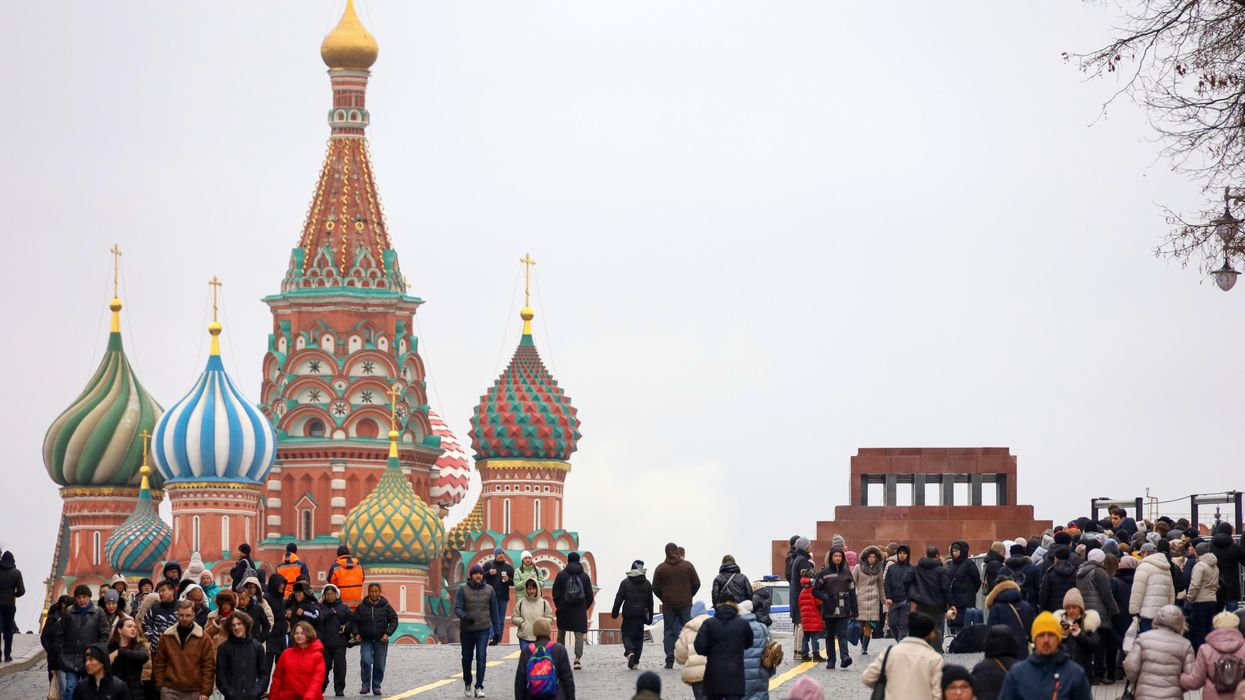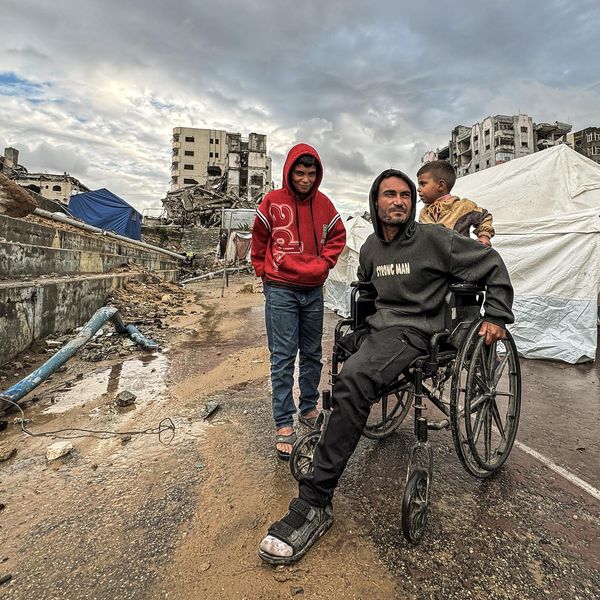The economic news of late has largely focused on the impact on Americans at the gas pump and grocery store in the context of ever rising inflation. Less discussed is how the Biden Administration's geopolitical goals and positioning (sanctions, fueling resistance in Ukraine, pressuring countries to join the coalition sanctioning Russia) are colliding with and causing more economic volatility, as well as undermining other goals, such as the efforts to mitigate the effects of climate change.
President Biden has tried to tie much of the blame for this increasing cost of living crisis to Vladimir Putin’s invasion of Ukraine, while ignoring a whole host of other factors that existed well before the war started.
It's all very fine and well to scapegoat Putin and the Russians for the current state of affairs, but the reality is that most of these adverse trends have been plain for all to see over the past three years, especially since the onset of Covid. To be sure, the Ukrainian conflict has exacerbated current problems, but Putin didn't create the tightest labor market in American history. He didn't cause the degradation of American social capital through the persistent resort to offshoring over the past 40 years , which has reduced the pool of skilled labor and further diminished its supply.
And Putin wasn’t the one who acquiesced to business leaders’ collective decision to opt for a neo-feudal economic model that long prioritized reducing labor to the lowest possible cost denominator, rather than seeing it as an important source of consumer demand that could enhance overall domestic economic prosperity (rather than lining the pocketbooks of America’s own oligarch class).
Until recently, inflationary concerns were generally dismissed by western fiscal and monetary officials as “transitory.” Most central banks have now discarded that canard. As a result, monetary officials, led by the U.S. Federal Reserve, have initiated a tightening cycle to cool down the global economy to reduce inflationary pressures, which has clearly replaced unemployment as their number one policy priority.
This shift in priorities is understandable, especially in Washington, given that the U.S. is now experiencing one of the tightest labor markets in its economic history. No question, being made unemployed is devastating for those who lose their jobs and for their families. But unemployment affects usually only a minority of working people at any one time. Inflation, on the other hand, affects the majority, particularly those with low incomes where basic commodities like energy, food, transportation and housing matter even more.
Moreover, inflation’s impact today is arguably worse for the majority of Americans than it was during the 1970s, given the hugely unequal income distribution in the country, especially relative to the 1970s, as measured by the Gini coefficient (the most commonly used statistical measure deployed to assess income inequality).
President Biden is undoubtedly correct to note Russia and Ukraine’s key roles as two of the world’s major suppliers of wheat, and the extent to which the Russian invasion of Ukraine has put the harvest of these two leading grain exporters in jeopardy (thereby exacerbating food inflation, which is still absurdly described by the economics profession as “non-core,” as if people can somehow survive without being fed). And while there is an argument that “core” elements of inflation (i.e., those excluding energy and food) are diminishing (as suggested by the most recent consumer price inflation report from the U.S.), it is hard to envisage relief on the food and energy front, so long as the conflict continues.
But how to make up the shortfall to alleviate sharp rises in energy and food? The ongoing presence of Putin as head of Russia’s government likely means years before sanctions are eliminated, meaning further disruption to supply, along with the sheer length of time it will take to rebuild Ukraine’s devastated economy.
That means food prices stay high.
As far as energy goes, LNG plants are costly to build, and take years to pay off. Both Algeria and Qatar, two major suppliers of natural gas, do not have adequate capacity, and as far as U.S. exports go, Jack Fusco, chief executive of Houston-based Cheniere, has suggested that it will take up to five years to meet the anticipated demand from the EU.
As for other alternatives, coal prices are soaring. And with coal prices now at multi-year highs, there will be no immediate relief from falling energy prices either. Fuels will just become dirtier.
All of which suggests that Ukrainian war has complicated the efforts to reduce inflation in a variety of ways and forced uncomfortable trade-offs in the process, which Western policymakers refuse to confront, as they continue to arm Ukraine and thereby perpetuate these very contradictions. As Martin Sandhu of the Financial Times has argued, “the point of reducing monetary stimulus is to take the wind out of the sails of demand in the economy, so as to bring it down to the damaged supply capacity.”
True, but higher interest rates also complicate the task of addressing supply gaps, because they raise the cost of investment, and complicate the task of sectoral reallocation to address other issues, such as the economy’s ongoing dependence on fossil fuels, as well as undermining Biden’s efforts to redomicile strategic industries in the U.S.
Even before the conflict started, U.S. inflation was outstripping wage growth. That means real wages have been going down for many Americans. Financial assets have been rising even faster with the stock market still close to all-time highs. Home prices are up 32.6 percent over the past two years and housing affordability is the worst it has been for first-time buyers since 2007. And thanks to the Covid bailouts, corporate America continues to do vastly better than the average American worker.
To his credit, Biden tried to reverse these trends with his "Build Back Better" proposals and his first Covid relief package, but now policy aspirations to create a more equitable form of growth going forward are going down in flames as inflationary pressures mount and priority is being accorded to re-arming Ukraine (with little accompanying effort to consider means of mitigating the conflict).
What about the idea that "core" inflation (excluding food and energy) is diminishing? That is a questionable assumption, considering that labor market conditions are still very tight; hence wage pressures should remain constant. Indeed, there is disturbing new evidence to suggest that an inflationary psychology, long dormant, is beginning to take hold again, particularly in the U.S.
Richard Curtin of the University of Michigan has been conducting the Michigan Consumer Sentiment Survey since 1976, which was the mid-point of the Great Inflation. He knows well the behavior of consumers under conditions of high and rising inflation.
Curtin also manages to reconcile the seeming paradox in which we see deteriorating consumer sentiment (as measured by the Michigan Consumer Sentiment Index) co-existing with a recent, yet seemingly unsustainable, rise in consumer credit (which according to the Federal Reserve’s most recent data, increased at a seasonally adjusted annual rate of 11.3 percent). He suggests that the psychology and behavior of consumers and policy makers during that Great Inflation of the 1970s may be with us now once again:
“Consumers purposely advance their purchases in order to beat anticipated future price increases. Firms readily pass along higher costs to consumers, including the future cost increases that they anticipate. That's what happened in the last inflationary age, which started in 1965 and ended in 1982”
With a global economy now on war-footing, the political impulse will trend toward additional expenditures and continued capacity constraints, given existing sanctions and the concurrent weaponization of trade (actively championed by Washington these days). All of which suggests that inflation, the global food and energy crises, supply chain disruptions — are all being exacerbated by a growing militarism that will only make the economic situation here and abroad much worse.
















